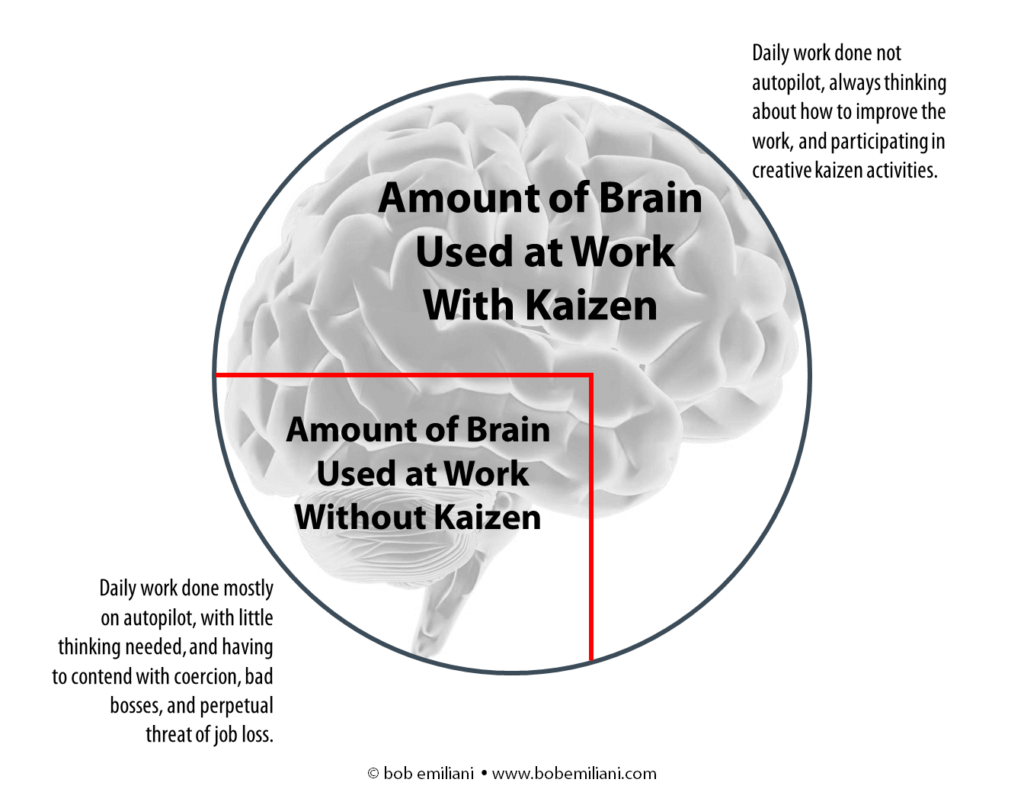With classical management, waste is a feature, not a bug. Every type of resource that you can think of is wasted, to greater or lesser extents: money, material, equipment, space, energy, people, time, etc. Why? Because it is the leader’s prerogative to waste (or save) as they see fit.
Most top leaders see fit to waste resources, under the hallucination that they are experts as saving resources such as time and money. But, being leaders at the top of the hierarchy, they almost always possess the preconception (and associated negative beliefs and behaviors) that workers’ ability to think and be creative is so poor that they need to be told what to do and how to do it. Consequently, leaders develop competencies (“trained incapacities,” inability to see beyond what they know) to preserve the status quo, from one generation to the next, even as times and circumstances change dramatically.

Most top leaders’ have competencies that are very effective at suppressing human ideas, creativity, and ingenuity, and thus sentence employees to a work life where some or most of their time is wasted, just to preserve the status quo. This puts humanity in a state of perpetually being behind the times; behind where we could be in terms of the flowering of human life and living. This is the obscene cost of classical management.
It explains why most top leaders are highly supportive of the use of Lean tools for people in lower levels of the organization, but not supportive of kaizen. The former does not alter the status quo in ways that are recognizable to top leaders. But the latter surely does, and so the market long ago shifted away from kaizen to Lean tools. The multitude of consultants and trainers offering Lean tools owe their prosperity to the mass of leaders who remain deeply committed classical management.
The recent article in Fortune magazine about General Electric’s turnaround under CEO Larry Culp featured the magic of Shingijutsu-Kaizen. While GEs turnaround involves numerous important decisions and big changes, Mr. Culp saw kaizen as an indispensable part of the turnaround effort and he sees it as an indispensable part of everyday work after the turnaround is complete. Yes, kaizen is that important, in both difficult times and good times.
Will other top leaders who read the Fortune magazine article feel the same way? Probably not, because they see no reason to abandon classical management. If they engage with kaizen, it will probably be to do what they have always done: lay people and close facilities.
Wherever Mr. Culp has worked, he has wanted to avoid the business and human cost of classical management. And still, nearly 50 years after the business world became aware of kaizen, most leaders have little knowledge of it and see it as unnecessary. What will you do to change that?
Afterthought: Business leaders overuse the brainstem, cerebellum, basal ganglia, and amygdala — the oldest parts of the brain, the “reptilian brain” — which is what causes exhaustion among employees. They do that to avoid employees’ greater use of other parts of their brain (e.g., prefrontal cortex, hippocampus, etc.) to gain compliance and avoid the kinds of changes that will disrupt the status quo.

